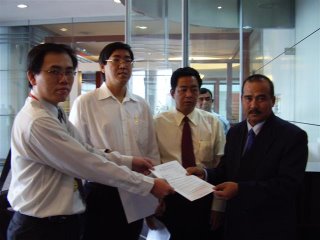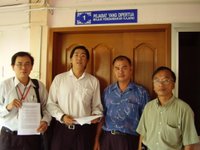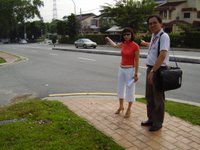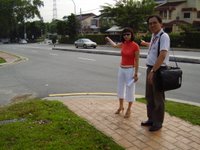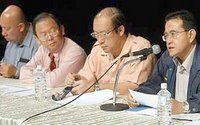Introduction
Increasing petrol prices for the past few years together with the recent 30 sen hike on all petroleum products have served as a wake-up call for all Malaysians.
Although the oil price hike is totally inevitable in lieu of the increasing crude oil price, the government must also at the same time gives serious thought to overcome this entanglement by providing multiple alternatives to the people to avoid being further burdened by increasing oil prices. Similar emphasis shall also be placed on energy efficiency of our industries.
Energy efficiency has been the top agenda of industries nowadays when industrial players are struggling to keep a lower operational cost without sacrificing the quality of their outputs or products. One of the methods to achieve this will be to improve energy efficiency.
In order to achieve this, industrial players are at this moment more than willing to slowly phase out conventional fossil fuel (i.e. diesel, fuel oil etc which are less efficient and eventually be more expensive) and replace it with other energy resources like natural gas.
Although the government calls for “a change of lifestyle”, it must be reminded that unless a comprehensive, sustainable, user-friendly, integrated and affordable public transportation system is in place, there will be very little the general public can do to change their lifestyle. Malaysian vehicles generally still depend on fossil fuel. It will be even more difficult for general public to totally cut off from the pressure of increasing oil price hike as living costs are all directly and indirectly relied on petrol and diesel when alternatives fuels like biodiesel / biofuel are yet marketable in Malaysia.
Therefore, Malaysia requires a comprehensive energy policy to provide strategies and solutions to transform Malaysia into a fuel-efficient and environmental-friendly nation, and also to stay sustainable in terms of energy management and consumption, as well as to ensure a secure energy supply for our next generations.
It must be reminded that the policy must also simultaneously coincide well with other policies, i.e. National Automobile Policy, National Public Transportation Policy as well as National IT Policy.
There are a few pressing reasons why we should look into this issue deeply. These reasons are as followed:
1. Economical reason: a comprehensive planning on how we shall manage our energy resources can protect Malaysia from being continuously affected by soaring oil price.
2. National security reason: future war-fares among countries will not longer be launched based on lands and territories, but on resources and water, which form the most important elements for the survival of human beings.
3. Environmental reason: there is no doubt that the combustion of fossil fuel produces green house gases which cause global warming. Under Kyoto Protocol, industrialized countries shall reduce their emission of green house gases by an average of 5.2 per cent during the first implementation period between 2008 and 2012. Industrialized countries that contribute 55 per cent of the emissions are required to ratify the protocol before it is brought into force.
From here, we shall ask ourselves the following questions:
1. Do we have a long-term solution to ensure that we do not lose out economically especially when Malaysia will become a net oil importer in 2010? If we have, then what are the solutions?
2. Can Malaysians be guaranteed of an undisrupted, stable and undisturbed supply of oil for the next 15 years at least, before Malaysia become a developed nation?
3. By taking into consideration the current consumption rate of fossil fuel, is the government determined to preserve a clean urban environment by cutting down urban fossil fuel consumption, although Malaysia is not a developed nation at the moment?
Current situation
In order to answer these questions, the bigger question lying behind is: Are we a petrol-depending country and how do we measure whether we are a petrol-depending country?
Oil Intensity Index, an often overlooked indicator, measures the quantity of oil required to produce US$ 1 billion of GDP (in this case using 1996 US Dollars). The index assesses each country’s intensity relative to the world average, which is equal to one.
Malaysia was ranked 26th in 2004 with an index score of 1.69 (see attachment), which is above world average index of 1.00. Most developed countries known with comprehensive and sustainable public transportation system and higher efficiency of energy usage ranked lower than world average. All ASEAN countries except Philippine ranked higher than Malaysia in 2004.
Biofuel as an alternative
Much has been mentioned about biofuel but what exactly is biofuel? Biofuel is a blended product of petrol and vegetable oil blended in various proportions. Biodiesel is a very good example of biofuel, in which diesel is blended with vegetable oil at certain percentage.
Biodiesel is a vegetable oil-based fuel that runs in diesel engines - cars, buses, trucks, construction equipment, boats, generators, and oil home heating units. It's usually made from soy or canola oil (which blended biodiesel is also named as First Generation Biodiesel), and can also be made from recycled fryer oil (Second Generation Biodiesel). In Malaysia, the major vegetable oil used is palm-oil.
Other than palm oil, alcohol can also be blended with gasoline. The product of this blended fuel is “Gasohol”. Gasohol is already marketable in Thailand and is widely accepted in Brazil after the 1970s Arab oil embargo.
In order to cut down our reliance on conventional fossil fuels, this will not be achieved if a sustainable, comprehensive, affordable, user-friendly and integrated public transportation system and a variety of fuel alternatives to be selected are not in place. This should form a two-prong strategy for the government to adopt in formulating a policy on this matter.
This paper intends to focus on the second strategy with priority given to biofuels. Other resources such as natural gas will be separated from this discussion.
Increasing dmands for Biofuel in oversea’s market
In UK, the UK government's Renewable Transport Fuel Obligation demands that 5% of all motorcar fuel must come from renewable sources by 2010, bioethanol will be used to fuel a growing number of cars on British roads. Ordinary cars can run on blends of 5% ethanol and 95% petrol, and this is quickly and silently emerging as a standard fuel at Britain's service stations.
But some of the ethanol will be mixed with just 15% petrol to produce a fuel dubbed E85 (since it contains 85% ethanol), which can be used by special biofuel-enabled cars, like the Ford Focus flex-fuel or the Saab Biopower.
Furthermore, signatories of Kyotol Protocol are also bounded to reduce green-air gas by 2012. Coincidently, biofuel can help to reduce pollution by reducing emission of green-air gas.
Looking at the prospect of biodiesel in the European market, there shall be no reason for Malaysia, being the largest palm oil exporter in the world, to be left behind in marketing biodiesel to the European market.
In 2005, Malaysia Palm Oil Board (MPOB) had already announced that it will invest RM 60 million to construct three Biodiesel refineries. These refineries will be built in Port Klang, Selangor, Pasir Gudang, Johore and another one will be built in Labu, Negri Sembilan. MPOB will be holding 50% equity in each refinery. Port Klang refinery is expected to be the first operational refinery.
With these three refineries operational, Malaysia is expected to be major biodiesel producer by 2007. Although this is impossible without the amendment of Petroleum Development Act before biodiesel can be marketable.
What are the benefits?
1) National security – Biodiesel can be produced domestically and this reduces our dependence on imported oil especially when Malaysia expects to be a net oil-importer by 2010.
2) National economy. Using Biodiesel keeps our fuel buying ringgits at home instead of sending it to foreign countries. This reduces our trade deficit and creates jobs.
3) Biodiesel is more sustainable and less toxic compared to fossil fuel. European Commission Biomass Action Plan describes Biodiesel as "the only direct substitute for oil in transport", and as such it is "one of the only two measures that have a reasonable chance of [reducing greenhouse gas emission] on a significant scale in the near future" - the other being reduced emissions from petroleum-powered engines.
4) Controlled emissions. Biodiesel contributes fewer emissions to global warming compared to fossil fuel as it contains vegetable oil. Biodiesel reduces emissions of carbon monoxide (CO) by approximately 50% and carbon dioxide by 78.45% on a net lifecycle basis because the carbon is biodiesel emissions is recycled from carbon that was already in the atmosphere, rather than being new carbon from petroleum that was sequestered in the earth’s crust. A reduction of 65% of particles is also expected and aromatic hydrocarbons which are carcinogen are can be reduced up to 71%. Biodiesel can produce more NOx (nitrogen oxides) emissions but this can be overcome by using catalytic conversion.
5) Engine life. Biodiesel reduces engine wear by as much as one half, primarily because it provides excellent lubricity. Biodiesel also provides smooth engine running with less pollution.
Arguments on Biodiesel
The government should not solely depend on biodiesel to handle energy crisis potentially faced by this country. Biodiesel should not be regarded as an easy way to deal with the soaring petroleum price while reducing the problem of greenhouse gas emissions as it allows people to continue driving petrol-guzzling vehicles, allowing us to continue living unsustainably. Thus, the government must be proactive in finding more alternatives to meet the fuel demands of the people.
Emphasis shall not be placed on biodiesel and its accompanied huge potential profit, but shall be placed on how to diversify the people’s reliance on fossil fuel. Thus other readily available energy resources such as natural gas shall be given equal importance and priority by the government. In short, biodiesel should not be regarded as an “answer-all” solution. Some arguments surrounding the future of biodiesel must be vastly addressed:
1. High demand on palm oil may cause cooking oil shortage – due to its higher profitability and huge market in Europe, palm oil producer will tend to supply more to produce biodiesel, causing less supply to domestic cooking oil industry, indirectly posing pressure to the government to increase the ceiling price of domestic cooking oil.
While we are not sure whether the government is willing to increase the ceiling price of cooking oil due to its possible shortage of supply, the government must realize that the production of biodiesel should never in any situation upset the supply of crude palm oil to the cooking oil industry and the price of cooking oil shall be maintained at an affordable level. The Ministry of Domestic Trade and Consumers Affairs shall come out with an official stand on what are the steps the government will engage as to stabilise the price of cooking oil.
2. Far from being environmentally friendly, climate change experts claim that biodiesel in fact poses a threat as more forest reserve will be cleared for oil-palm plantation, causing devastation of green-lungs instead of improving air quality. Palm oil has been blamed for destroying vast swathes of jungle, pushing endangered animals such as the orangutan to extinction, and creating Southeast Asia's annual haze crisis as plantations are burned off.
For example, most biofuels in the UK are provided by imports, some of which comes from producers whose green credentials are questionable.
The “large market” in Europe is mainly caused by the slow acceptance of biodiesel in the region while regulations had been passed to increase the usage of biodiesel at a certain timeframe. Furthermore, the EU has conceded that it will miss its target of getting 5.75% of transport running on such fuels by 2010. UK is doing particularly badly, with just 0.3% of cars using the fuel. The most advanced country is Austria with 2.5% of the target that they have reached in 2005, but there are other countries that have done very poorly - for instance the UK or Finland.
Looking from this angle, there will be a great market for biofuel in the European market and it is important for the government to fix a proper accreditation scheme to ensure that it will not contribute to pressure on land use, guaranteeing that biofuel crops are not damaging sensitive environments.
3. The government has to depend on plantation companies to produce a fix amount annually to maintain a stable palm oil supply to produce enough biodiesel for both domestic consumption and export purpose. The government has requested plantation owners to commit 5% of their annual production to be utilized for the national biodiesel venture. Indirectly this could cause uncertainties in biodiesel supply and its price, unless the government is prepared to fix the price of biodiesel and provide subsidies.
4. Biodiesel only benefits diesel vehicles, which is not the type of vehicle that most Malaysians are travelling with. In addition to that, Malaysia’s poor diesel quality (of having a sulphur content of about 0.05%, which is at least 10 times higher than high quality diesel suitable for modern diesel engine in Europe) is deterring automobile importers from marketing diesel-driven vehicles in Malaysia automobile market, thus reducing Malaysians’ opportunity to consume cheaper diesel for their drivings.
Therefore, the government shall review its policy of importing high sulphur crude oil from Arabic nations and exporting our low sulphur refined petroleum in order to provide more alternatives to the people in terms of allowing them to use higher quality diesel.
Will the government subsidize biodiesel? How will the government encourage biodiesel?
Despite that biodiesel (B5) will be a direct viable substitute for gasoline, but a big question yet to be answered is its ceiling price.
Although various parties claim that biodiesel will be sold at a lower price than conventional diesel fuel, the government shall also reveal the pricing mechanism for biodiesel and if possible, the government shall be transparent of whether it is prepared to revamp the current pricing mechanism for fossil fuel, especially of whether the government is prepared to subsidize biodiesel when this is a common practice in a lot of countries.
For example, the Thai government taxes heavily on the bulk fuel to subsidize biodiesel in Thailand. This is why biodiesel in Thailand is sold much cheaper in order to promote its usage among the Thais. Government initial decision to place the price of biodiesel at RM1.58 per litre, which is the same as diesel price in Malaysia is not going to help to promote the use of the fuel among motorists. Various incentives must be provided to bring down the ceiling price of the fuel and this shall be done as earlier as possible as to stabilise confidence of industry players and consumers.
Sweden's state-backed bioethanol programme, meanwhile, ensures that there is no duty on the fuel. E85 (85% vegetable oil blended with 15% diesel) -enabled cars are offered free parking in Gothenburg, Stockholm and other municipalities. Biofuel cars are also 20% cheaper to insure and are exempted from the Stockholm congestion charge, while both personal and fleet users pay less tax.
The government shall adopt similar strategy to impose a higher taxation on petrol-guzzling SUVs and to encourage people to use biodiesel or natural gas for their vehicles through various incentives.
Private effort is equally important
Thailand has been the leader, if not the pioneer in the region, in terms of the production and commercialization of biofuel, mainly because Thailand is not an oil producing country, which explains the continued sence of urgency for the government to develop alternative fuels when international crude oil price is soaring high.
Petroleum products available today in Bangkok include Premium Gasoline, Regular Gasoline, Gasohol 95 (a mixture of ethanol and gasoline, which is not marketable in Malaysian market), diesel and also biodiesel.
While Malaysia has yet marketed our biofuel, gasohols and biodiesels are already marketable in the Thai market, due to the cohesive cooperation between the private sector and Thai government. While in Malaysia, the government are still in talks with various plantation companies to commit a fixed amount of annual production for the national biodiesel venture as well as to urge all palm oil refining companies to adopt new technology in their palm oil refineries. This poses worries of whether Malaysia can be a leading biofuel producers in 2007 as envisaged by the government.
Plantation Enterprises and Commodities Minister Datuk Peter Chin Fah Kui was quoted as saying in New Straits Times dated 2nd January 2006 that:
“About 80 per cent of the 70 oil palm plantation companies in Malaysia are reluctant to invest in new technology touted by the Government as labour and cost-effective.
“The technology, called the "continuous sterilisation process", is a more efficient way of milling oil palm fruit. It cooks the fruit before crushing it in an integrated conveyor-belt process to extract crude palm oil (CPO), an important component of biodiesel.
“Companies were reluctant to adopt the new technology due to its RM15 million cost as they are comfortable with the present ways of processing palm oil, which involve many workers.
“Continuation of current practices will risk them of being left behind as Indonesian companies have adopted the method and are aggressively investing in new ways to increase production.”
Thailand’s leading agri-business group, CP Group had recently announced its plan to sell products from its biodiesel project to PTT Plc, the state energy group.
PTT Plc has approached the private company for a marketing proposal. Besides PTT, foreign investors from the United States, Germany, France and Japan have shown interest in being partners of the projects. Thailand government encourages the private sector to setup an output of 300,000 litres per day, could be online next year. Thai government also aims for an output of 8.5 million litres of biodiesel produced per day in 2012, with the intention to make gasohol mandatory in 2008 and the use of biodiesel widely available as an alternative to pure diesel in 2012.
Looking from this angle, one willl be interested to know as to what extend Petronas had committed to provide aids to MPOB’s national biodiesel venture. There shall be a full reveal of how the government is going to engage more local and foreign companies with cutting edge technologies to boast and develop Malaysia’s biodiesel production. Prime Minister Datuk Seri Abdullah Ahmad Badawi’s claim that Petronas has agreed “principally” to cooperate with MPOB to market biodiesel in selected petrol kiosks (Sin Chew Daily, 22nd March 2006) does not provide us the impression that Petronas is committed or is at least ready to spearheading the usage of biodiesel nationwide. Being a national oil company with vast experience in penetrating international oil market, Petronas should become an active player in this sector rather than being a passive by-passer. Petronas should directly and actively involved and engaged in the production, distribution and marketing of the fuel both in international market, just like what its counterpart is doing in Thailand.
Step up research efforts on 2nd Generation Biodiesel
2nd generation biodiesel means biodiesel produced from waste oils and waste cooking oils, or in another words, it is produced from recycled oil, instead of crops.
The major advantage of 2nd generation biodiesel is that the biodiesel industry can reduce its dependency on palm oil plantation to supply vegetable oil, thus saving the environment from being cleared for planting oil palms.
The technology to fully commercialise the fuel is still under study but Malaysia shall have no reason to be left behind if Malaysia is committed to become a major international biodiesel supplier.
